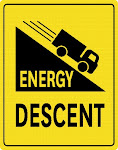Below is the title, introductory quote and first two paragraphs of my first substantial work since A Free-dragging Manifesto. It is soon to be published in Angelaki, the journal of the theoretical humanities, by Routledge in the UK.
Free-dragging, Slow Text and Permapoesis:
Towards a biophysical poetry
If language is of the world, like galaxies and ecosystems, this means it participates in what it represents, though how privileged it may be either as a representative or as a participant remains to be seen. Ira Livingston
I suppose it could go without saying that with every culture the interrelationships between food (survival) and art (living) are wholly understandable. To mark this point a friend and I, at an airport shop recently, wheeled a large stand of brightly coloured packets of potato chips ten metres across the floor to sit beside a large stand of brightly covered paperback books. This small, unplanned action was filmed and later published online as a free-to-air video poem called Best Sellers.
How we obtain our food directly informs our imaginative psyches and links our art to our food. In this essay I aim to make conscious the link between principles of agro-ecology and permaculture and a decapitalised and carbon fixed poetry – poetry that consciously and explicitly participates within a dynamic biosphere, not just in content but also in form. Just to be clear and ’fess-up here, when I made Best Sellers I was at an airport flying home from a festival where I had presented a paper that centred on art’s relation to carbon. In this work, I will begin with a premise based on the relocalisation of resources; present four theses identifying the material and social woes of ‘impermanent culture’; reference a fifth thesis proposed by anthropologist and activist David Graeber on the material and social woes of liberalism’s aggregate-growth model; show the transitional practices of ‘free-dragging’ and ‘slow text’ as examples of biophysical art (post John Cage); and posit the portmanteau, ‘permapoesis’, as a post-capitalist ethic that articulates an ecological mode of production for the arts.
You can read the entire work (with its specific formatting)
here.
I especially thank commissioning editor Kate Fagan for her generous assistance, critique and clear-eye over this piece, as well as Ian Robertson, Meg Ulman, Hamish Morgan, Jason Workman and Peter O'Mara for their valuable suggestions and supportive peerage. I am also indebted to David Holmgren's incredible life's work and writing, as well as Derrick Jensen and David Graeber for their inspired thinking and activism.





